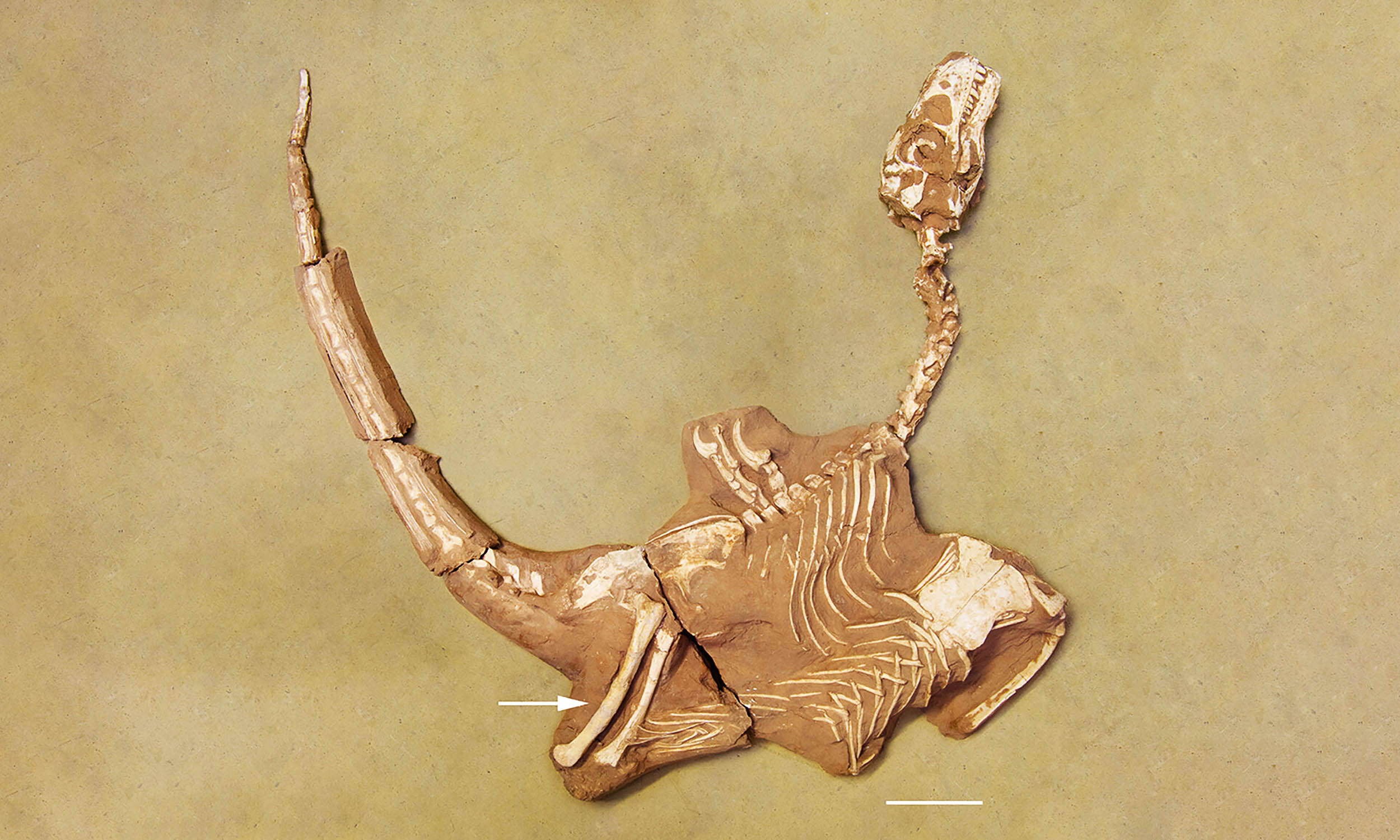Meet Shri rapax: The New Predator That Redefines Dinosaur Hunting!










2025-07-28T13:35:09Z

Did you know that a newly discovered dinosaur had thumb claws almost twice the size of Velociraptor’s? That’s right, the Gobi Desert just added a fierce new player to its Late Cretaceous lineup: Shri rapax!
Paleontologists have unveiled this stocky, two-legged predator, measuring about 6.5 feet (2 meters) long. But don’t let its size fool you; it packs a punch with some seriously impressive weaponry. After a winding journey through private collections, the fossil was finally repatriated to Mongolia, revealing insights about a creature that roamed the lakeshores of this desert landscape between 75 and 71 million years ago.
One of Shri rapax’s most striking features is its thumb claw, stretching an astonishing 3.1 inches (nearly 8 cm) long, nearly double that of the famous Velociraptor. This discovery was led by Andrea Cau, an independent Italian paleontologist, who collaborated with scientists from the Royal Belgian Institute of Natural Sciences and North Carolina State University (NCSU).
The unique adaptation of Shri rapax is remarkable; this dinosaur hunted with its hands instead of relying on its feet. The hands of this new dromaeosaurid boast bones that are 150 percent more robust than those of Velociraptor, even though they share a similar body length. Digital scans reveal that the finger bones are thick, capped by that oversized claw—an unusual design that raises the bar among known raptors.
According to Cau, “The rapacious features we see in the hand signal a predator that relied on pure grip strength rather than slashing kicks.” Unlike the Velociraptor, which has a sickle-shaped toe claw designed for quick strikes, Shri rapax shifted its focus to its thumb, freeing its feet for better balance.
But why those big claws? Team member Tsogtbaatar Chinzorig suggests that the middle claw’s impressive size allowed it to grasp and restrain larger prey. This is reminiscent of modern birds of prey, where larger talons are found in species that tackle bigger animals. In the case of Shri rapax, it likely targeted heftier prey than the smaller lizards and mammals typically hunted by its contemporaries.
The stout skull of Shri rapax, reconstructed through CT data, hints at strong bite mechanics suited for delivering lethal damage once it secured its grip. Fossils from the Gobi Desert tell tales of fierce confrontations, like the famous “fighting dinosaurs” where a Velociraptor locked jaws with a ceratopsian named Protoceratops. However, Shri rapax brings a fresh perspective to these narratives, potentially wrestling its prey face-to-face with its strong thumbs, delivering crushing bites rather than pouncing with talons.
This new predator adds to the already rich tapestry of mid-sized theropods in the Gobi fossil record. At least three closely-related raptor species show evidence of sharing overlapping habitats within the Djadokhta Formation, each evolving unique adaptations to prey size and hunting strategies.
Shri rapax’s presence challenges previous assumptions about faunal turnover in Mongolian formations, highlighting that geographic or environmental factors, rather than just time, may have influenced their evolution. As researchers continue to study the fossil record, they hope to clarify whether these remarkable raptors coexisted or followed each other in rapid succession.
Interestingly, Shri rapax has been identified as the sister species of Shri devi, a name given to a dinosaur from slightly younger rock layers. Though they share short snouts, they diverge significantly in limb structure, indicating that even within the same lineage, evolution encouraged specialization.
This discovery is crucial for raptor science, reminding us that predatory dinosaurs were complex creatures shaped not only by their predatory claws but by their hands, skulls, and tails working in harmony. The repatriated fossil showcases how discoveries can rewrite our understanding of paleontology, years after the specimens were unearthed. It’s an exciting time for researchers as they delve into the anatomy of Shri rapax, integrating it into computer models that will help estimate muscle mass and pulling forces.
Ultimately, the story of Shri rapax underlines the incredible value of Mongolia's desert sites, where fine sand and rapid burial capture fleeting moments of Mesozoic life for scientists to study. This fascinating discovery was published in Historical Biology.
 Elena Petrova
Elena Petrova
Source of the news: Earth.com